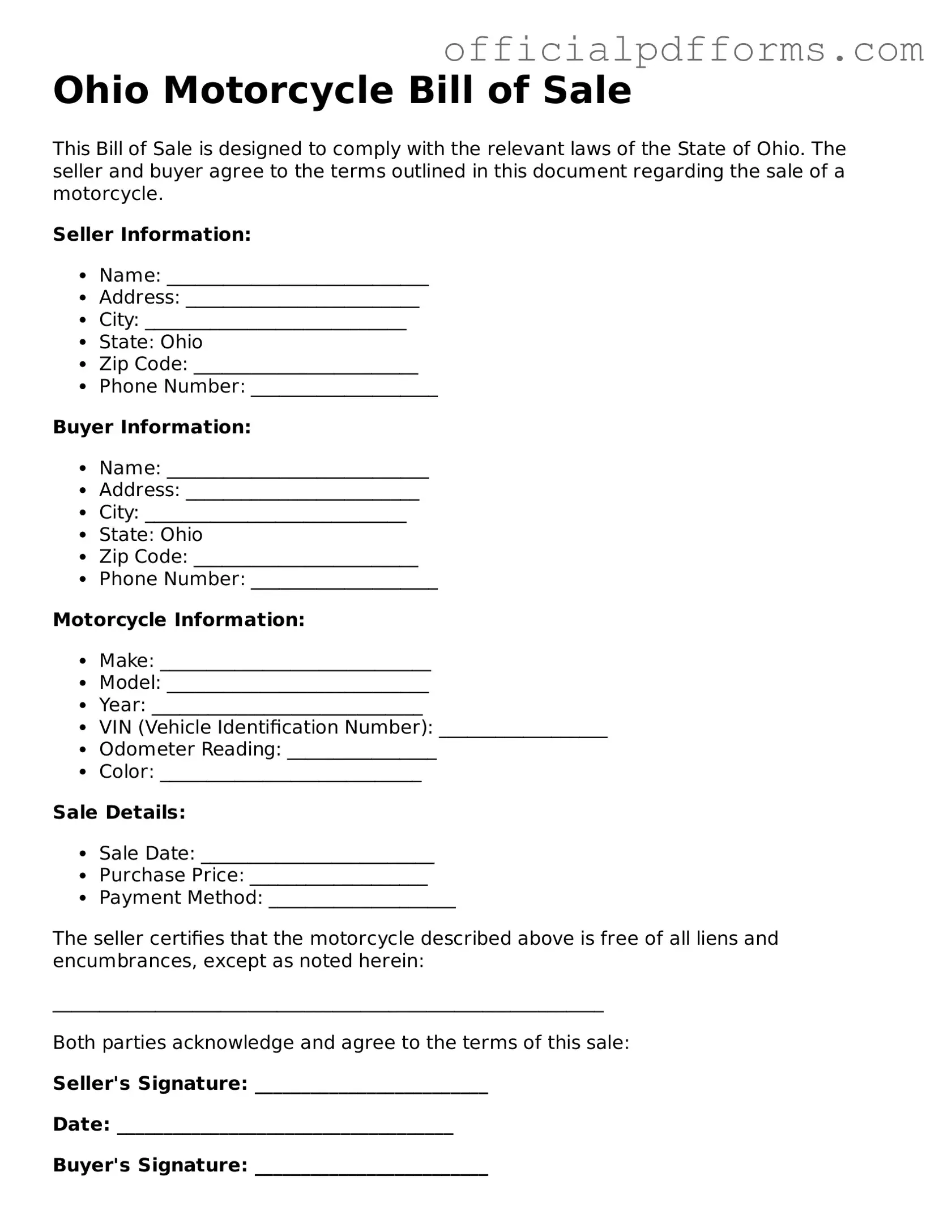What is a Motorcycle Bill of Sale in Ohio?
A Motorcycle Bill of Sale is a legal document that records the transfer of ownership of a motorcycle from one party to another. It serves as proof of the transaction and includes important details such as the buyer's and seller's names, the motorcycle's identification number (VIN), and the sale price.
Why is a Motorcycle Bill of Sale important?
This document is important for several reasons:
-
It provides evidence of the sale, protecting both the buyer and seller in case of disputes.
-
It is often required by the Ohio Bureau of Motor Vehicles (BMV) when registering the motorcycle in the new owner's name.
-
It can help prevent fraud by documenting the transaction details.
The following information should be included in the bill of sale:
-
Full names and addresses of both the buyer and seller.
-
The motorcycle's make, model, year, and Vehicle Identification Number (VIN).
-
The sale price and date of the transaction.
-
Signatures of both parties.
Is a Motorcycle Bill of Sale required in Ohio?
While a Motorcycle Bill of Sale is not legally required in Ohio, it is highly recommended. The document provides necessary proof of ownership and can facilitate the registration process at the BMV.
Can I create my own Motorcycle Bill of Sale?
Yes, individuals can create their own Motorcycle Bill of Sale. It is essential to ensure that all required information is included and that both parties sign the document. Templates are also available online to assist in this process.
How does a Motorcycle Bill of Sale affect registration?
The Motorcycle Bill of Sale is often required when registering the motorcycle in the buyer's name. The Ohio BMV may ask for this document to verify the transaction and confirm that the buyer is the new owner.
What should I do if I lose my Motorcycle Bill of Sale?
If the Motorcycle Bill of Sale is lost, the seller can provide a duplicate or a new bill of sale. It is advisable for both parties to keep copies of the original document for their records to avoid complications.
Are there any fees associated with the Motorcycle Bill of Sale?
There are typically no fees directly associated with creating a Motorcycle Bill of Sale. However, fees may apply when registering the motorcycle with the Ohio BMV, which can vary based on the motorcycle's value and other factors.
Can a Motorcycle Bill of Sale be used for other vehicles?
While a Motorcycle Bill of Sale is specifically designed for motorcycles, similar documents can be used for other types of vehicles. Each vehicle type may have specific requirements, so it is important to ensure that the document meets the necessary criteria for the vehicle in question.
